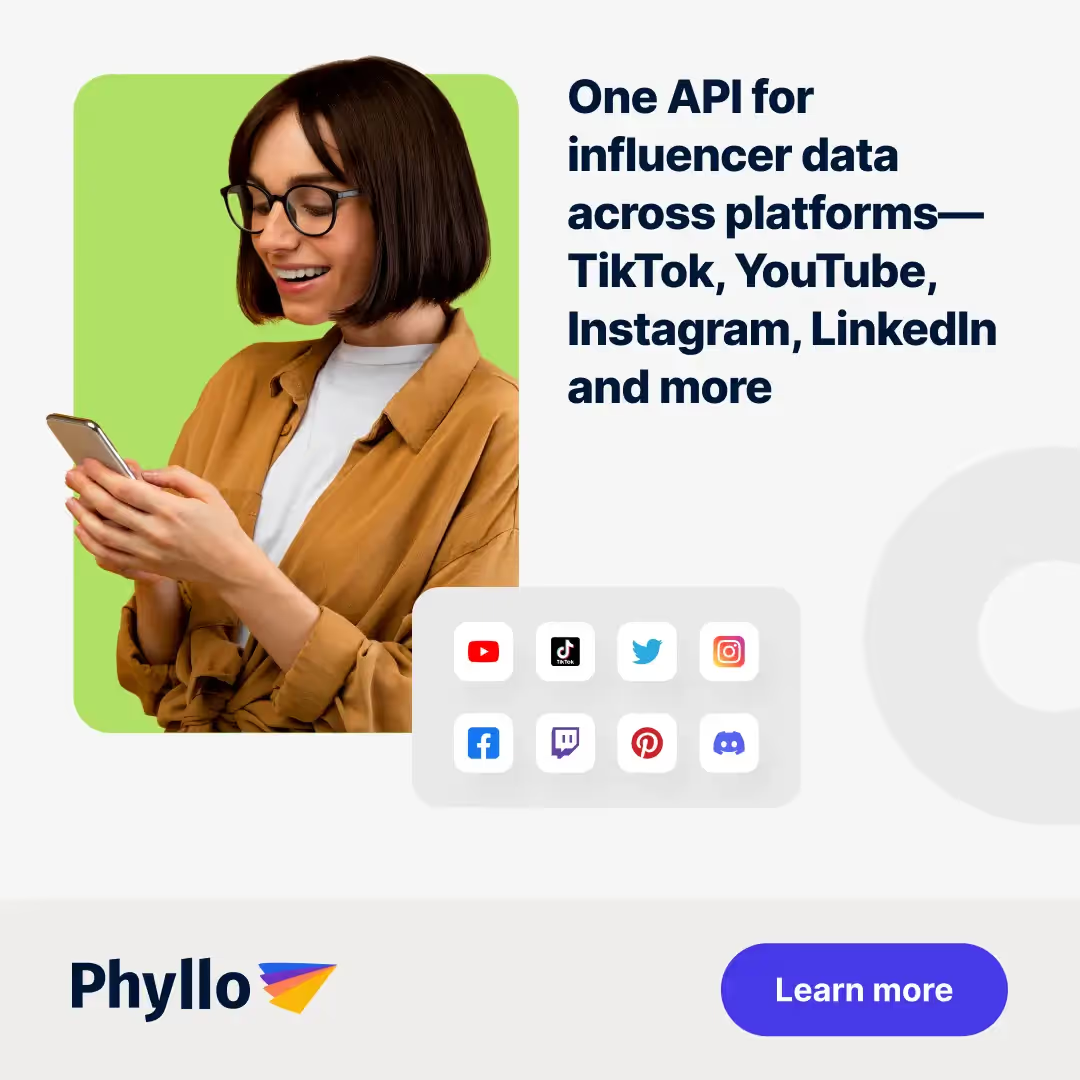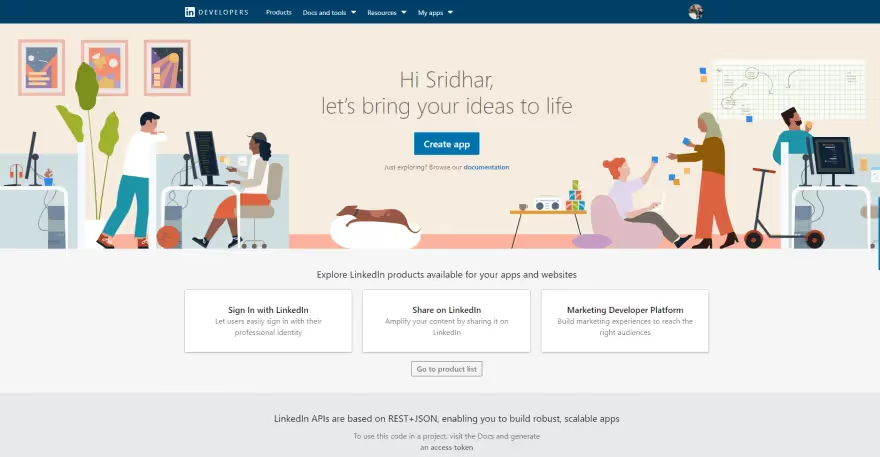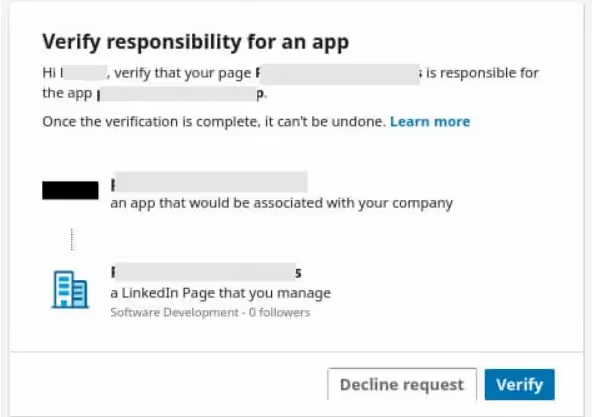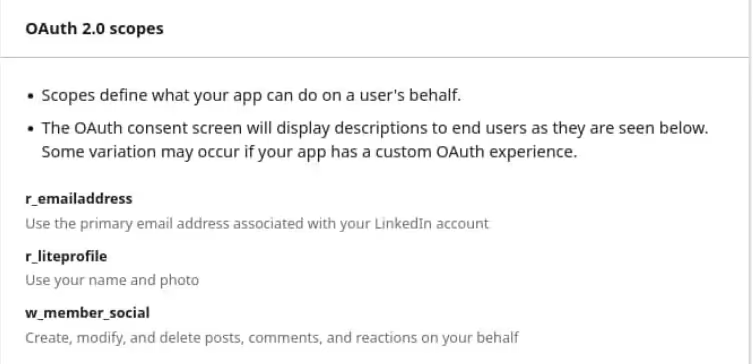In this digital era, a strong online presence is key to business success, with LinkedIn playing a pivotal role. Our blog examines LinkedIn's API integration, a crucial tool for optimizing your business's reach, recruitment, and marketing strategy. Tapping into LinkedIn's community of over 700 million professionals and its marketing developer platform, businesses can connect with clients, display their skills, and generate leads.
The Indispensable Role of LinkedIn in Business Growth: From Networking to API Integration
Did you know that LinkedIn is the ultimate platform for B2B marketing and sales? Surveys prove it's more effective than any other social network. Among B2B marketers, 77% agreed it brings the best results on non-paid platforms, while 79% said the same for paid platforms. Impressive, right? Plus, LinkedIn's content gets 15x more impressions than job postings. Buyers look for thought leadership, and 70% of users trust LinkedIn. Boost your returns by automating LinkedIn marketing using LinkedIn APIs and software on your LinkedIn account page
Here are some examples of what you can do with it
- Talent Solutions: Find and attract top talent efficiently.
- Search Profiles: Discover professionals based on specific criteria.
- Access Token: Authenticate and access LinkedIn's API resources.
- Job Openings: Explore and apply to available job opportunities.
- Profile ID: Unique identifier for individual LinkedIn profiles.
- Sales Navigator: Powerful tool for sales professionals to enhance prospecting.
- Send Messages: Engage with connections through direct communication.
- LinkedIn People: Connect with professionals and expand your network.
- Live Events: Participate in real-time virtual or in-person events.
- Work History: Showcase professional experience and employment background.
Introduction to LinkedIn API: What it is & Ways to use
The LinkedIn API is the central interface for developers to interact programmatically with LinkedIn account. With the LinkedIn profile API, developers can tap into the power of LinkedIn's vast professional network and optimize their applications for success.
LinkedIn's consumer solution platform allows users to market their brand, foster connections, and gain insights into their performance, strengthening their online presence and business reach.
Its key benefits include:
- Profile API Integration: Enables networking within apps via profile api
- Credential Sharing: Simplifies posting achievements on company page
- Content Sharing: Amplifies user expertise visibility
- Company Connectivity: With Company page, extend brand exposure to LinkedIn's vast audience
- Seamless Sign-In: Streamlines user acquisition and user's profile management
- Streamlined User Management: Saves time by integrating LinkedIn's robust profile management
- Personalization: Provides tailored content based on up-to-date LinkedIn profile data
Thus, harnessing LinkedIn's API significantly elevates app functionality, experience and extract data.

Setting Up LinkedIn API: A Step-by-Step Guide
Here's a step-by-step guide to help you get started:
1. Visit the LinkedIn Marketing Developer platform

- Sign in to the LinkedIn developer portal.
- Create a new app and provide basic details like name and logo.
- Associate your app with a company page (create one if needed).

2. Request App Verification From the Company Page

- On the Settings tab, click "Verify" to get a verification link.
- Send the link to the company page administrator.
- The administrator confirms responsibility for your app, and once verified, you can proceed.
3. Request Access to Features
- On the Products tab, request access to "Share on LinkedIn" and "Sign In with LinkedIn" (consumer platform).
- To post on company pages, request access to the "Marketing Developer Platform" (requires approval and application details).
4. Review Application Authorization

- On the Auth tab, register the OAuth redirect URL for your app.
- Make sure your app has the following scopes: w_member_social, r_liteprofile, w_organization_social (if marketing platform access was requested).
- Safely store the client ID and client secret in a database or vault.
Related Read:
- How to use Authentication, Search & Conversion Linkedin API
- How to get Email Address from LinkedIn API
- How to Use LinkedIn Creator Mode
Challenges in Setting Up LinkedIn API Integration
There are a few challenges to be aware of during the implementation process. These challenges include:
- API Complexity: The LinkedIn data and its application programming interface (API) aren't always easy to navigate. You need to get your head around documentation, endpoints, and those pesky authentication methods.
- Authorization: Gaining access to OAuth tokens can be a challenge. It's crucial to securely handle user data and understand the authorization process.
- API Limitations: LinkedIn's API might limit your data access or have feature restrictions. Keeping up with updates can be tough.
- Privacy: You've got to strictly follow LinkedIn's terms of service and privacy guidelines while dealing with structured data points.
- Troubleshooting: Error handling and problem-solving can be complex.
- Performance: Your application needs to handle many API requests efficiently for optimal performance.

Featured and Functionality
The LinkedIn Developer API (class: linkedin_api.Linkedin) provides a set of features and functionalities for interacting with LinkedIn services programmatically. Below is a summary of the features and functionalities provided by this API:
- Authentication:
- Login to LinkedIn by providing a username and password.
- Optionally refresh cookies and toggle debugging.
- Add Connection:
- Send a connection request to a LinkedIn profile by specifying the profile's public ID or URN.
- Get Company Data:
- Fetch data about a specific company using its public ID.
- Get Company Updates:
- Retrieve company updates and news activity.
- Get Conversation Data:
- Fetch data about a specific conversation using its URN ID.
- Fetch conversation (message thread) details for a specific LinkedIn profile.
- Get Profile Information:
- Retrieve detailed profile information for a given public ID or URN ID.
- Fetch first-degree connections, contact info, badges, network info, privacy settings, skills, and posts of a LinkedIn profile.
- Get Profile Views:
- Retrieve profile view statistics and chart data.
- Get Feed Posts:
- Retrieve a list of URNs from the feed, sorted by recency, with options to set limit, offset, and exclude promoted posts.
- Get Invitations:
- Fetch connection invitations with options to set start and limit.
- Get Job Data:
- Fetch data about a specific job using its job ID.
- Get Post Comments:
- Retrieve comments on a post using the post's URN.
- Get School Data:
- Fetch data about a specific school using its public ID.
- Manage Conversations:
- Fetch a list of conversations the user is in.
- Mark a conversation as seen.
- Remove Connection:
- Remove a connection by specifying the public ID of the LinkedIn profile.
- Respond to Invitation:
- Accept or reject a connection invitation.
- Search Functionality:
- Perform a general LinkedIn search with customizable parameters.
- Search for companies using specific keywords.
- Perform an advanced job search with filters such as keywords, companies, experience levels, job types, job titles, industries, locations, remote options, and more.
- Get Current User Profile:
- Retrieve profile data for the currently logged-in user.
.avif)
How to set up LinkedIn API Integration: Steps & Challenges
Setting up integration involves a few steps, but it can also come with some challenges. Here is a brief overview of the process:
- Create a LinkedIn Developer Account: The first step is to create a LinkedIn Developer Account, which gives you access to LinkedIn’s API and provide you the relevant developer tools.
- Create an Application: Once you have a developer account, you need to create an application. This involves providing information about your business and specifying the permissions your application needs.
- Get API Key and Secret Key: After creating the application, LinkedIn will provide you with an API Key and Secret Key. These are unique identifiers that authenticate your application when making API requests.
- Implement LinkedIn API in Your Application: The final step is to integrate the API into your system or application. This could involve writing code to make API requests and handle responses.
Despite these steps being inherently straightforward, businesses often encounter challenges during API integration. These could range from dealing with LinkedIn's strict API usage policies to handling the complexity of API integration. However, solutions like Phyllo can simplify the process and overcome these challenges, Explore more
Exploring LinkedIn Developer API Features and Functionality
LinkedIn Developer API comes loaded with features that allow businesses to leverage LinkedIn's structured data and networking capabilities. Here are some of the key features:
LinkedIn API Endpoints
It provides several endpoints, each offering specific functionality. For example, the Profile API lets you access user LinkedIn profiles information, while the Share API allows you to post updates on LinkedIn.
LinkedIn API Comments
It also enables businesses to manage comments on their posts. Businesses can programmatically create, delete, and retrieve comments, facilitating better engagement with their audience.
How to get LinkedIn API Access
To get access to API, you need to create an application on the LinkedIn Developer platform. The application will require details like the name of your business, website URL, and business email. Once the application is created and approved, LinkedIn will provide you with an API key and Secret Key. These keys are used to authenticate your API requests.

Use cases and examples of LinkedIn API implementation
The API has been implemented in various ways by businesses. For example, a job portal can use the API to allow usethe rs to apply for jobs using their LinkedIn profiles. Similarly, a CRM system can integrate the API to fetch and manage LinkedIn contacts directly from the CRM.
Get access to Sandox to learn more about how Phyllo can empower your business in the creator economy.
Best practices for using the LinkedIn Developer API
When using the LinkedIn Developer API, it's important to follow certain best practices to ensure smooth and efficient operation. These include:
Adhering to these best practices will help you build more stable, secure, and scalable LinkedIn integrations.
LinkedIn API Pricing and Access
LinkedIn offers different API access levels, each with its own paid subscription. The Basic access is free and provides limited access to LinkedIn's APIs. For the paid subscription, businesses need to apply for LinkedIn Partner status, which comes with its own costs.
Checkout Phyllo Pricing on LinkedIn API
How Phyllo Helps in Implementing LinkedIn API
Phyllo can greatly assist businesses in implementing LinkedIn API. It provides a simplified and intuitive interface for API integration, reducing the complexity involved in the process. Furthermore, Phyllo's robust infrastructure ensures reliable and efficient API communication, enabling businesses to leverage LinkedIn's features to their fullest potential. Explore Phyllo Vs. Scrapers - Why Platform API Over Third-Party Data Scrapers
LinkedIn API presents abundant opportunities for businesses to elevate their operations and marketing endeavors. By adopting a strategic approach and utilizing appropriate tools, businesses can seamlessly incorporate the LinkedIn API into their systems and tap into the immense potential of the world's largest professional network. This integration enables them to unlock new avenues for growth, expand their reach, and connect with a vast pool of professionals, ultimately propelling their success.
Frequently Asked Questions
1. Does LinkedIn have an API?
Yes, LinkedIn offers a set of RESTful APIs that allow developers to access profile data, post content, manage company pages, and more. These APIs are accessible through the LinkedIn Developer Platform.
2. Is the LinkedIn API free?
LinkedIn offers a limited free API plan with access to basic profile data. For extended usage and advanced features, such as accessing more user profiles or job-related data, a paid or approved partnership plan is required.
3. How do I get a LinkedIn API key?
To get a LinkedIn API key, you must create an application in the LinkedIn Developer Portal. Once your app is registered, you can generate your Client ID and Secret Key under the app’s settings.
4. How do I get started with LinkedIn API integration?
Begin by registering an app in the LinkedIn Developer Portal. After setting up the app, request the necessary permissions, integrate OAuth 2.0 for authentication, and begin using the API endpoints relevant to your use case.
5. What are the common use cases for LinkedIn API integration?
LinkedIn APIs are used for automating job postings, retrieving user and company profile data, posting content, managing company pages, and enabling LinkedIn login authentication for applications.
6. What are the permissions required to use the LinkedIn API?
Each API endpoint requires specific permission scopes. For example, profile access may need r_liteprofile or r_emailaddress, while posting content requires w_member_social. These must be granted by users and approved by LinkedIn.
7. How can I obtain LinkedIn API access for my business?
To get business-level access, register your company’s app on the LinkedIn Developer Portal and request access to specific products like Marketing or Jobs APIs. Approval depends on your use case and compliance with LinkedIn's guidelines.
8. Can I use the LinkedIn API to post content on behalf of users?
Yes, but you must be part of LinkedIn's Marketing Developer Program and obtain the w_member_social permission scope. The user must also authenticate and consent to your app posting on their behalf.
9. What are the limitations of the free LinkedIn API plan?
The free plan offers very limited access, often restricted to a small number of user profiles and basic data. Advanced features and higher rate limits require paid or partner-level access.
10. Is LinkedIn scraping legal?
No, scraping LinkedIn data without explicit permission is against LinkedIn’s Terms of Service. LinkedIn actively enforces these rules and may take legal action or suspend violating accounts.
11. How secure is LinkedIn API integration?
LinkedIn uses OAuth 2.0 for secure authentication. Developers must follow best practices for storing credentials, requesting permissions responsibly, and protecting user data.
12. Does the LinkedIn API support real-time data?
No, LinkedIn does not offer real-time data streaming or push notifications. To keep data updated, developers must implement polling mechanisms.
13. Is there a limit to how many requests I can make with the LinkedIn API?
Yes, LinkedIn enforces rate limits that vary based on your access tier and the specific API used. You can monitor your quota in the Developer Portal.
14. Where can I find more resources and support for LinkedIn API?
You can access documentation, product details, and support through the LinkedIn Developer Portal. This is the best place to stay informed and troubleshoot any issues.
.avif)

.avif)







